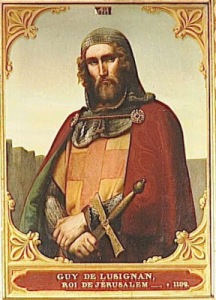MARGARET TANNER’S FAVOURITE VACATION
I have to say I don’t really have a favourite place for a
vacation, anywhere is good for me as long as there is plenty of sun, and I am
waited on hand and foot, and have lots of yummy food.
Because I write historical romance, vacations are usually
the honeymoon for my hero and heroine, but not always.
In my novel, Allison’s War, which starts a few months before
the commencement of the Great War (1914 – 1918), the vacations are a little
different.
The first one belongs to the villain of the piece, Phillip
Ashfield, an aristocratic young Englishman, the second one is Allison’s
honeymoon, and the third one is Allison’s desperate journey to find her son
after Phillip kidnaps him.
PHILLIP
Phillip Ashfield uncrossed his cramped legs and stood up to
reach into the overhead luggage compartment. What an imposition, having to
manhandle his own luggage.
“Good God, man, when you’re in the colonies you have to look
after yourself.” He remembered the advice he’d received from Tony, one of his
friends from Eton. How true, the Godforsaken
bloody backwater.
If his father hadn’t been so ill, he would have refused
point blank to come out to Australia.
Had his mother not been so distraught about the old man, he would have ignored
her entreaties to visit relatives at the back of beyond.
God, it was hot. The temptation to loosen his collar became
almost unendurable. He wore the latest summer fashion for 1914, a three-piece
suit with a shaped coat that had a vent down the back. His linen, as always,
was the finest money could buy. Neither one helped keep him cool in these
temperatures.
TOMMY AND ALLISON
The zoo proved to be much larger than Allison expected. The
monkeys and giraffes were her favorites. Tommy insisted they have a ride on the
elephant, and as the animal swayed along, they got a wonderful view.
“This is fun,” he said, squeezing her hand. “I like hearing
you laugh; it’s such a happy sound.”
“I never knew we could have such an exciting time. Such
places we’ve seen! I have to pinch myself to make sure it’s not a dream,” she
said.
His teasing smile faded, and his blue eyes burned fiercely.
“I’ll never forget, either.”
The bears lumbered around in a concrete pit, and Tommy
leaned so far over the edge she worried about him falling in. He laughed loudly
at this fear, and several people turned to look at them.
“Tommy, shh, people are staring.”
“I’ll give them something to really talk about.” Quick as a
flash he pulled her close and kissed her, and she felt hot all over.
“Well, really, how could a young woman cheapen herself so?”
A prim matron with two school-aged children complained to her male companion.
“Those young larrikins think they can do what they like, just because they’re
in the army.”
Allison’s embarrassment gave way to anger. “I happen to like
my husband kissing me. At least he’s man enough to fight for his country.”
ALLISON
At the railway station, Allison spoke to the stationmaster
and told him about Paul being taken by an English relative, and he promised to
make arrangements about seeing to the livestock on the farm.
What a dreadful journey. She wanted to scream at the train
to go faster, and by the time they pulled into Spencer Street station her hands shook
and her head ached. A young man helped her off with Daphne’s pram, and then she
found herself alone on a platform swarming with people.
The last time she’d stood here was with Tommy, as Jim bid
them farewell. She hadn’t known it at the time, but she would never see her
brother again. She shivered in the Melbourne
dusk, and it wasn’t from cold. Dear God, why wasn’t one of them spared to help?
Why did both of them have to die? She closed her eyes, and the noise of busy
people was blocked out, replaced by the muffled sounds of marching feet, as
ghostly battalions passed by on their way to immortality.
It was too late to find Phillip now; they had to get
somewhere to stay, first. The only place she could think of was the hotel where
Tommy had taken her for their honeymoon. It was dark when they reached the
hotel, and by the light thrown out from the street lamps, it appeared the same
as it had in 1914.
Allison’s War – Blurb
In 1916, on the French battlefields, a dying soldier’s
confession has the power to ruin the woman he loves.


























































.jpg)


